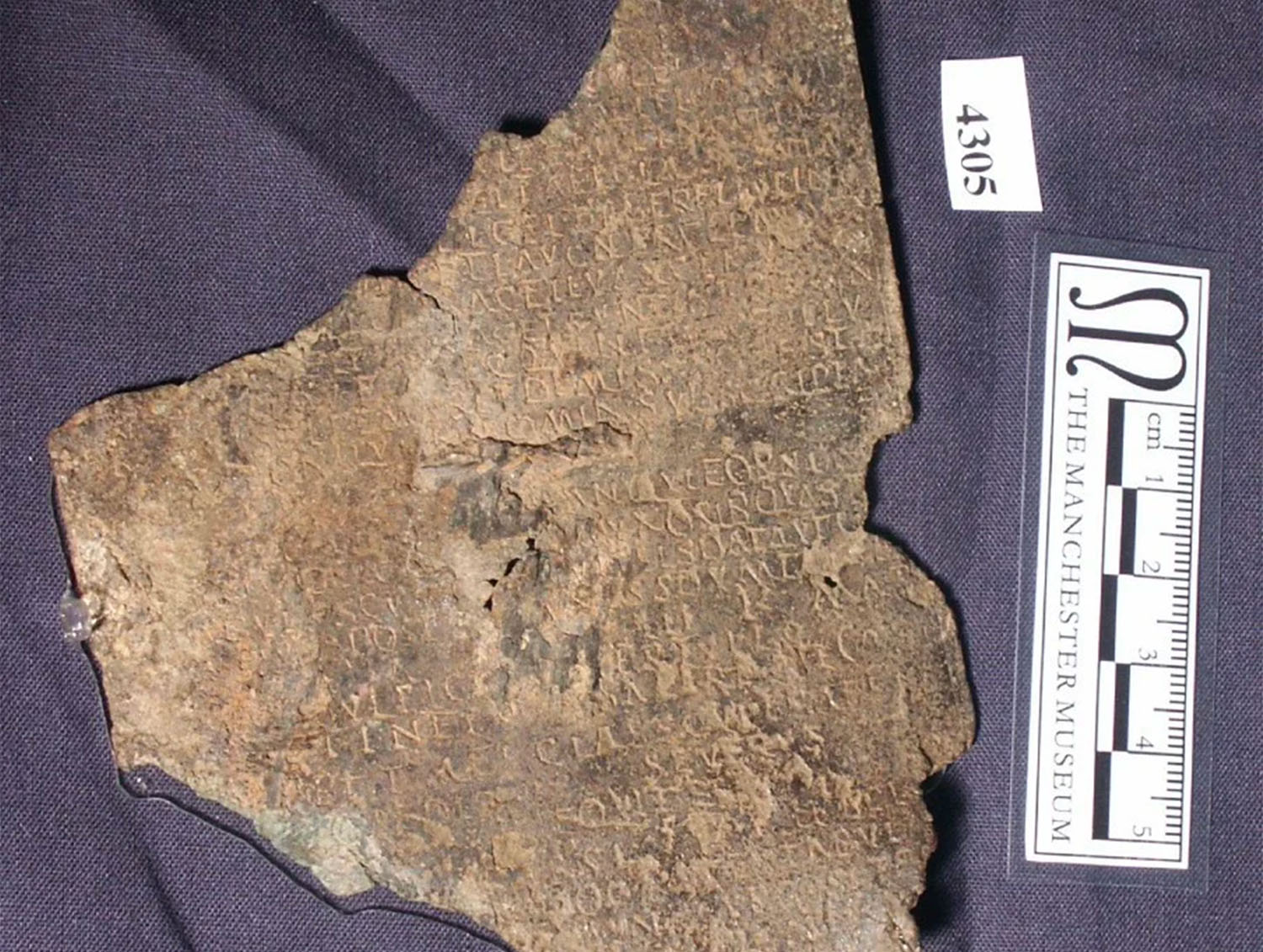
in Español / Spanish translated by Lauren Campbell
This object has been translated into 5 different languages by 5 different users
Este otorgamiento de la ciudadanía romana (que se otorgó en 158 AD) explica que el soldado al que se otorgó provenía de Heliópolis (nombre romano para la ciudad de Baalbek en Siria). Los soldados del ejército romano venían de todas partes del Imperio. Les otorgaban ciudadanía romana después de 25 años de servicio. Se registraba la ciudadanía romana en una tabla de bronce. Las piezas de esta tabla se encontraron con detectores de metales. No sabemos cómo se llamaba el soldado. Creemos que se unió a un regimiento que ayudó a derrotar una rebelión en Judea o en Israel en 135-8 AD. Se supone que el soldado se quedaba en el noroeste del Imperio después de salir del ejército. James y Howard Meadowcroft, quienes descubrieron la tabla, recibieron el premio de arqueología británica de la compañía BP en 1996. Descubrieron la tabla en Ravenglass, un pueblo en la zona de Cumbria en el noroeste de Inglaterra.
Do you have something you’d like to say, in your own language or English, about the object or translation? We’d like to hear what you think.
Translations are community-sourced and for anyone to participate in, however you use your language. For more information, see Community Guidelines.
19 Apr, 2023
These bronze tablets were used across the Roman Empire to record all elements of Roman Law. Another example is on display at the National Archeology Museum in Spain alongside the following description:
Discovered in Osuna, a town in Spain’s Seville province, this tablet is a record of the part of Roman law governing city life in the Roman city of Colonia Genua Iulia, named after the city’s founder, Julius Caesar.
The laws were enacted by Mark Anthony following Caesar’s death. However, the slabs actually date back to the times of the Flavian Dynasty in the second half of the 1st century AD. Around this time, some additions were made to the Lex Ursonensis, the city’s foundation charter. This text was originally made up of 142 sections, 73 of which have been uncovered with the discovery of these five tablets.
This type of legal tablet, used to write regulations into law on bronze for their long-term preservation, were displayed in public buildings. They became a crucial mode of communication, enabling the Romanisation of all the Empire’s cities under Roman law.
19 Apr, 2023
The original Spanish text reads:
Descubiertas en Osuna en 1870, estas tablas recogen parte de la ley que regulaba la vida municipal de esta ciudad romana llamada Colonia Genua Iulia, en honor de su fundador Julio César.
La ley fue promulgada por Marco Antonio, poco después de la muerte de César, pero estas piezas datan de época Flavia, segunda mitad del siglo I, fecha en la cual se intercalaron algunas anotaciones en la Lex Ursonensis. Este texto legal constaba originalmente de 142 capítulos de los que conservamos 73 distribuidos en cinco tablas.
Este tipo de tablas legales, donde la ley se fija por escrito en bronce, con el fin de que perduren mucho tiempo, eran expuestas para su lectura y conocimiento en edificios públicos, convirtiéndose en un medio de comunicación social primordial para conseguir la plena romanización de todas las ciudades del Imperio sujetas a Roma por el derecho latino.
You can read more here: http://ceres.mcu.es/pages/ResultSearch?Museo=MANT&txtSimpleSearch=Museo%20Espa%F1ol%20de%20Antig%FCedades.%20Tomo%20VIII.%20L%E1mina%202&simpleSearch=0&hipertextSearch=1&search=advancedSelection&MuseumsSearch=MANT|&MuseumsRolSearch=36&listaMuseos=[Museo%20Arqueol%F3gico%20Nacional%20(Colecci%F3n%20Tesoros%20del%20MAN)]